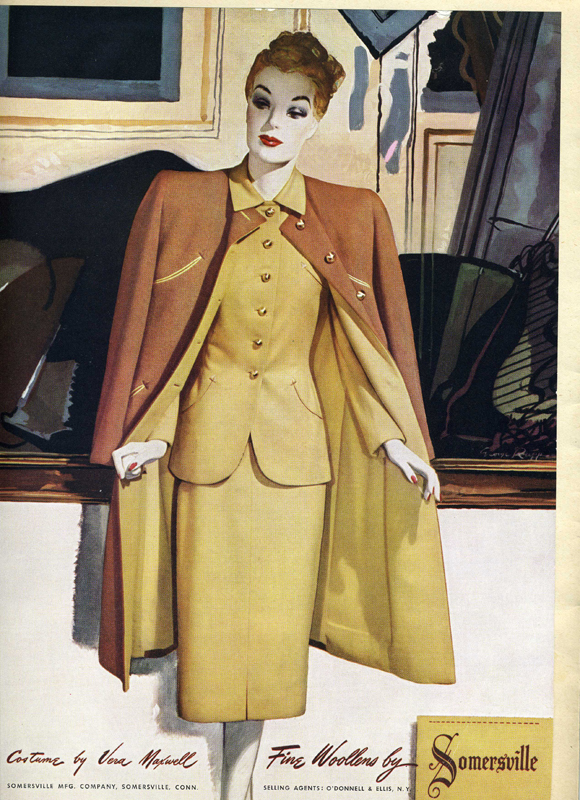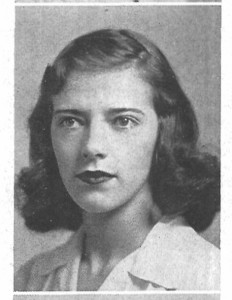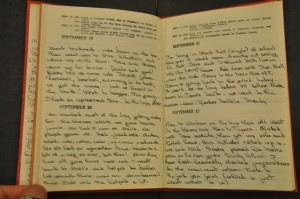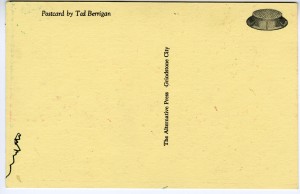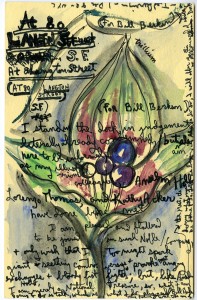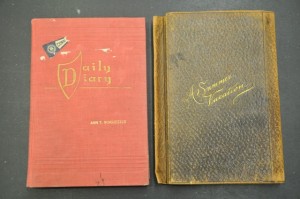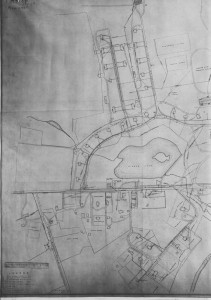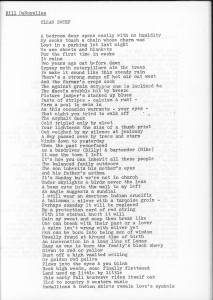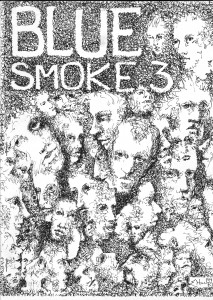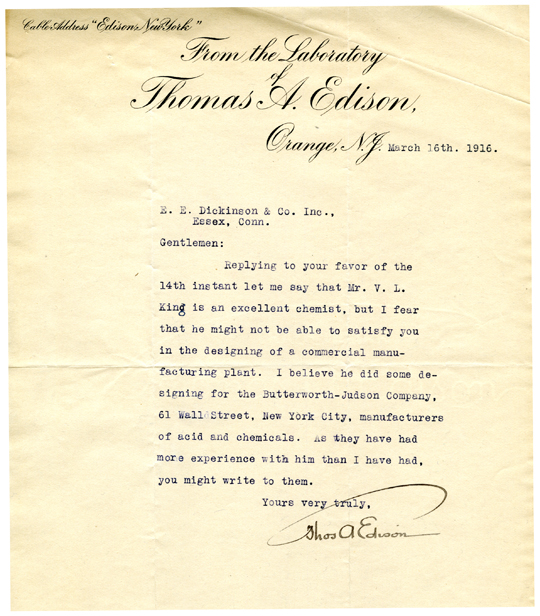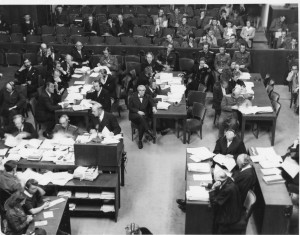
from Steven De Castro’s film
Fred Ho’s Last Year
— Steven De Castro is a recipient of a Rose and Sigmund Strochlitz Travel Grant to use the Fred Ho Papers held by Archives & Special Collections at the Thomas J. Dodd Research Center. A description of his research experience appears below.
Most folks visiting a library are doing so to write a book or a paper. But a library preserves not only the papers of our culture, but also its sights and sounds. And these audio and visual records are of particular interest, not just to writers, but to filmmakers.
Research on a historical film is similar to researching a book or paper. The director John Sayles, before producing Amigo (his drama set during the Philippine-American War), read over 100 books on the subject. The difference in documentary filmmaking is that after engaging in the scholarly work, one has to then engage in the business of negotiating and purchasing the rights to the video you have unearthed.
As a filmmaker, I have found Archives & Special Collections invaluable in my research for the upcoming documentary film, Fred Ho’s Last Year.
ABOUT THE FRED HO PAPERS
Enclosed within the walls of the Dodd Research Center’s archives are the sights and sounds created by one of the greatest avant-garde jazz artists of his generation – a prolific composer, a committed Asian American activist and public intellectual – Fred Ho (b. 1957).
Fred Ho is a 6-time Rockefeller Fellow, a Guggenheim Fellow, a 2-time National Endowment of the Arts recipient, the winner of an American Book Award and a Harvard Arts Medal. Despite these accomplishments, most people – even in the field of contemporary music – have never heard of him. Whether it is because of the fact that he is an outspoken Asian American (a rarity in the music industry), or whether it is because he infuses his own brand of leftist politics in most of his work, is anyone’s guess.
Perhaps the most compelling reason why such a prolific artist is not more widely known is that he refuses to be categorized. His music is too challenging to attract a popular fan base, and yet it embraces (and remakes) so many popular styles of music that it is not “out there” enough for other avant-garde musical cliques.
One of the most important facets of Fred’s art is that if you are buying his albums and enjoying his music, you are experiencing only a portion of his creative work. Fred is not only a musician, but an operatic composer whose works are meant to be both seen and heard at the same time. The only way to experience this, short of attending a performance, is through audio/visual media. The central repository of audio/visual records of Fred Ho’s work and public statements is in the Fred Ho Papers held by Archives & Special Collections.
Fred’s artistic and political direction profoundly changed when, in 2006, he was diagnosed with colon cancer. Currently Fred’s condition is terminal and he has refused further chemotherapy. Incredibly, Fred still continues his work. As of this date, he has a concert with his orchestra at the Brooklyn Academy of Music and an upcoming book. The significance of the Fred Ho Papers to the fields of Asian American studies, art, and music is difficult to quantify, both for this generation of scholars and for future generations.
Most of the video within the Fred Ho Papers is undiscovered and unplayed. Video is (quite understandably) not of interest to scholars whose main interest is to publish papers and books. And although the video is quite visually fascinating and intellectually provocative, much of it is stored on magnetic tape that degrades with each passing year.
BRINGING THE ARCHIVES TO THE MOVIE SCREEN
Through my research at Archives & Special Collections, I am able to tell a more comprehensive story of Fred Ho’s life and work on a greatly expanded timeline, through the use of archival video. The video shows Fred performing and speaking many years ago, before I began shooting. Through the skills of documentary storytelling, this material comes alive and brings the art and thought of Fred Ho to undiscovered audiences.
And yet, finding the material is only a first step. Under the Fair Use exception to the Copyright Act, a university is allowed to play these videos to a classroom of students. However, a filmmaker is not allowed to incorporate these materials into a film without authorization. So I had found the videos. Now what?
In addition to being a filmmaker, I am a lawyer. Through weeks of calls and internet searches, I was able to track down these rights holders for a release. The television production companies had their own release forms, but in one instance, I drafted the release for the company representative to sign.
Licensing of archival video footage for a film is expensive. Generally, institutions have different rate plans for licensing, which eases the cost for independent producers such as myself. Thankfully, one institution and most individuals I have asked have released their rights for free.
Due to the age of the material, many rights holders failed to locate the original high-quality versions of the footage within their own archives. Therefore, some of the video archives in the Fred Ho Papers turned out to be the only existing copies. In those cases, my research allowed me to acquire these materials and negotiate their release even when they were lost by the production company that made them.
When a video is made, it is usually made for a short term purpose. Production companies cover an event to place on the evening news. A performer may videotape his own performance for the purpose of reviewing it the following day. The maker of the video rarely intends to create a lasting archive. And yet, as a historical documentary filmmaker, I depend on the archival video at Archives & Special Collections – sometimes stored in archaic analog formats – to bring the subject alive.
Steven De Castro, J.D., is the Producer and Director of the upcoming feature documentary, Fred Ho’s Last Year. His research is made possible by the University of Connecticut’s ASIAN AMERICAN STUDIES INSTITUTE, ARCHIVES & SPECIAL COLLECTIONS AT THE THOMAS J. DODD RESEARCH CENTER, FRED HO FELLOWSHIP, and STROCHLITZ TRAVEL GRANT. You can contact him at decastro@credibilitymedia.com.
